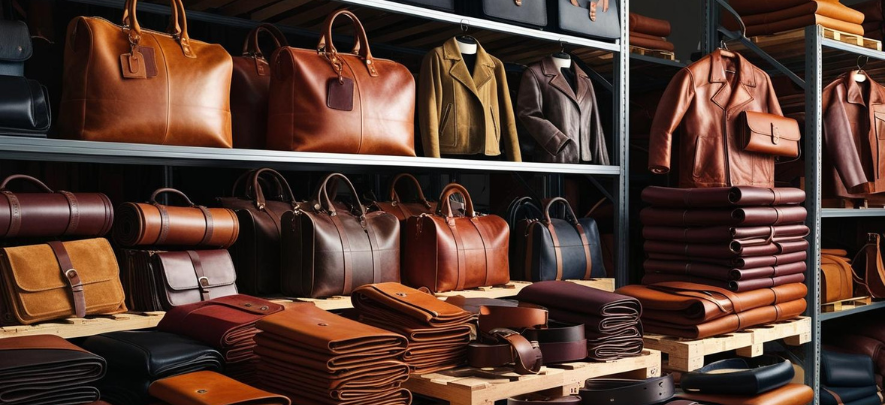How to Source Leather Products in Bulk: A Complete B2B Guide

Health & Lifestyle
3 week ago — 4 min read
In the world of fashion, accessories, interiors, and gifting, leather products continue to command high demand for their style, durability, and prestige. Whether you’re exploring bags, wallets, belts, travel bags, handbags, laptop bags, leather fabric or jackets, bulk sourcing leather goods can be a competitive advantage—provided you follow the right practices.
Here’s a practical guide to help businesses source leather products more efficiently and ethically.
1. Define Your Product Line
Are you sourcing fashion accessories, utility products, or luxury items? Clearly define your niche—be it leather wallets, belts, bags, shoes, jackets, or gifting items. Your product category will influence material grade, finish, pricing, and target market.
2. Choose the Right Leather Type
Understand the types of leather available: full-grain, top-grain, genuine leather, bonded leather, or vegan alternatives. Each offers a different balance of texture, durability, and cost. Match the leather type to your brand positioning.
3. Work with Certified Leather Suppliers
Always check for certifications like ISO, LWG (Leather Working Group), or local tannery licenses to ensure compliance, sustainability, and ethical processing. Avoid dealing with unverified suppliers that may compromise on environmental or labor standards.
4. Inspect Craftsmanship and Finish
Bulk buying doesn’t mean compromising on finish. Inspect stitching, lining, embossing, and closures. Request product samples if possible. Customization services like logo embossing or color selection are value adds.
5. Understand Minimum Order Quantities (MOQs)
Different suppliers have different MOQs. Start with suppliers offering flexibility for trial orders before you scale up. Negotiate tiered pricing based on order volume and frequency.
6. Evaluate Delivery Timelines and Logistics
Lead time is crucial in the leather industry. Factor in the production schedule, especially for handcrafted goods. Reliable suppliers will offer clear delivery timelines, logistics support, and shipment tracking.
7. Check for Return Policies and Quality Guarantees
Work only with suppliers who stand by their product quality. Return policies, post-delivery inspections, and product guarantees can prevent major losses in case of defects or mismatches.
8. Leverage GlobalLinker
Explore leather products on GlobalLinker to connect with verified Indian manufacturers offering everything from wallets, bags and belts to footwear and travel accessories.
Conclusion
Sourcing leather products in bulk requires a careful balance of quality, cost-efficiency, and brand alignment. By following these best practices, businesses can build a strong leather product line that appeals to customers across fashion, retail, and corporate sectors.
Image source: Canva
Disclaimer: The views and opinions expressed in this article are those of the author and do not necessarily reflect the views, official policy or position of GlobalLinker.
Posted by
Supriya MathurMy endeavour is to help business owners digitise, network and grow easily. Towards this I help organise webinars, curate articles and answer queries via our help centre.
View Supriya 's profile
Most read this week












Comments
Share this content
Please login or Register to join the discussion